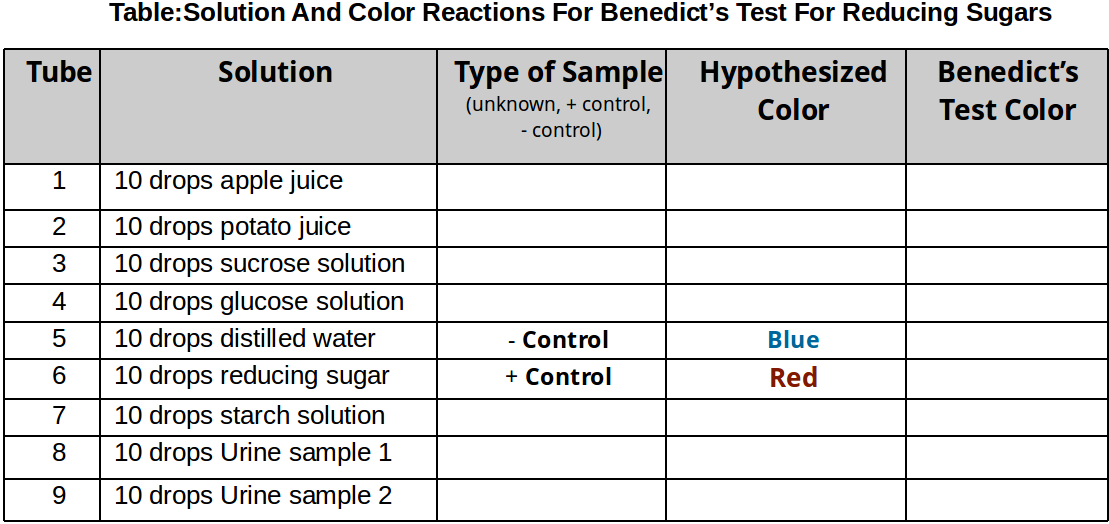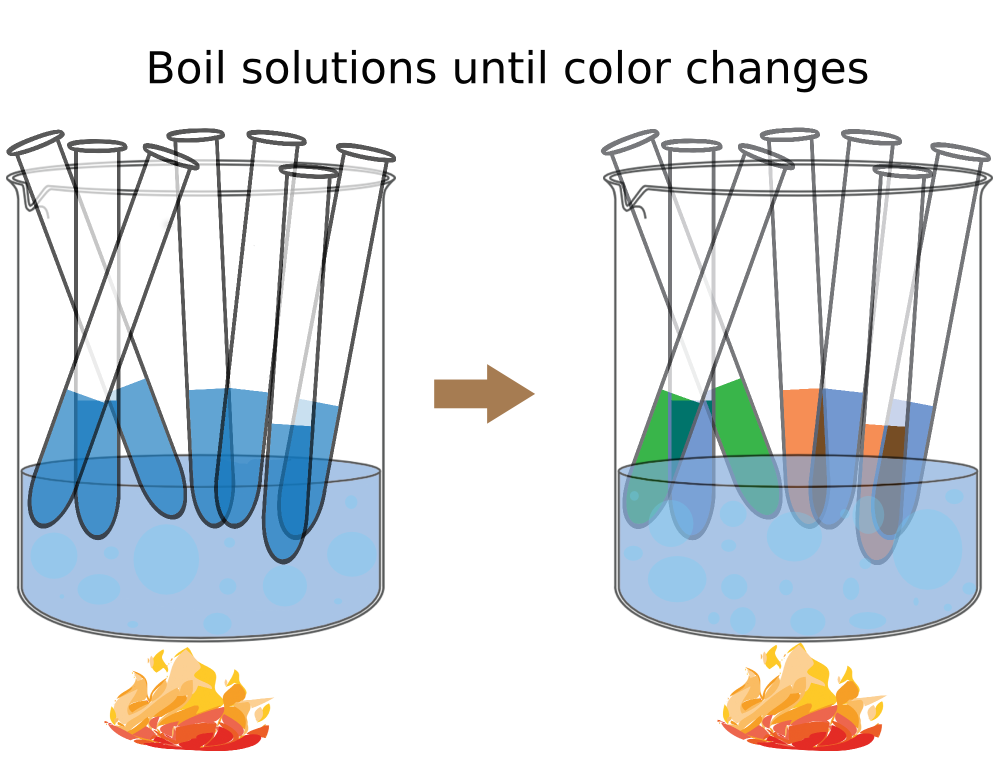Contents
Materials
|
|
Stop and Think:
- Use your senses and previous observations/experiences about the qualities of the experimentals.
- Formulate some hypotheses about the carbohydrate content of the experimentals or unknowns.
- Identify if the sample is experimental or control before making hypothesis
QUESTION: Are there simple reducing sugars in my juice? Are there simple reducing sugars in my urine?
Diabetes mellitus is a disease that refers to the inability of the cells to take in glucose. The word diabetes refers to urination and mellitus refers to sweetness. Since the cells of diabetics cannot remove glucose from the blood, there is an excess of glucose circulating that is eliminated in the urine. The traditional method of diagnosing someone with diabetes mellitus was to taste the sweetness of the patient’s urine. Let’s use Benedict’s test for the detection process instead of the unhygienic alternative.
Make a hypothesis and ask what we would predict from a Benedict’s test if testing a urine sample of someone with diabetes mellitus.
Benedict’s Test For Reducing Sugars
- Obtain 9 test-tubes and number them 1-9.
- Add to each tube the materials to be tested. Your instructor may ask you to test some additional materials. If so, include additional numbered test tubes.
- Indicate in the table whether the the sample you are testing is positive control, a negative control or an experimental.
- Before you begin the heating of the samples, use predict the color change (if any) for each sample. (use the sample type to aid in your prediction)
- Add 40 drops (or 2 ml) Benedict’s solution to each tube.
- Place all of the tubes in a boiling water bath for 3 min or until a noticeable color change and observe colors during this time.
- After 3 min, remove the tubes from the water bath and let them cool to room temperature. Record the color of their contents in the Table.



